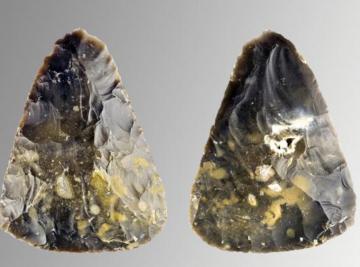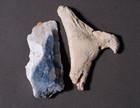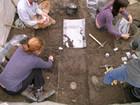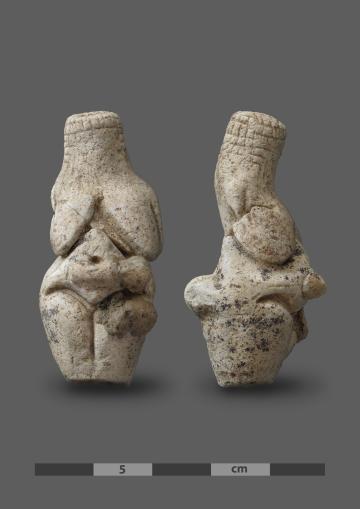You are here
News
- (-) Remove Discoveries filter Discoveries
- (-) Remove Paleolithic filter Paleolithic
Vincent Mourre, préhistorien à l'Inrap publie avec Paola Villa et Christopher S. Henshilwood, une découverte capitale sur le site de Blombos (Afrique du Sud) dans la revue Science.
A team of a archaeologists from Inrap (The National Institute for Preventive Archaeological Research) is at present excavating, curated by the State (Regional Archaeological Service - DRAC - Haute-Normandie), a prehistoric and paleontological site over 200,000 years old at Tourville-la-Rivière, Seine Maritime.
Numerous Neanderthal artifacts are currently being excavated by a team from the Inrap at Saint-Amand-les-Eaux (Nord). The excavation, taking place, in advance of the construction of a shopping centre, is curated by the Regional Archaeology Service, (DRAC Nord-Pas-de-Calais). An exceptionally well preserved human occupation around 50,000 years old has been found.
In the Somme region, a joint team of CNRS and Inrap archaeologists have discovered a site fundamental for our understanding of the history of Neanderthals.
In advance of work on line N° 2 of the Montpellier tramway, an excavation, curated by the Regional Archaeology Service, was carried out at Fontaine de Pila street by archaeologists from INRAP and the Centre National de Recherche Scientifique (CNRS). Together, they discovered the oldest traces of human occupation in Montpellier, dating back to well before the creation of the city!
This excavation, conducted since the month of April by team of Inrap archaeologists, has revealed three prehistoric occupations dated from the Final Paleolithic to the Mesolithic, as well as a rare sedimentary sequence.
The prehistoric site of Renancourt, in Amiens, has been known for many years and long remained one of the few sites providing evidence for human presence in northern France during the Early Upper Paleolithic (35,000 – 15,000). Discovered in 2011, during an Inrap diagnostic operation, the site of Amiens-Renancourt 1 has been under full excavation since 2014. During the 2019 season, an exceptional Gravettian “Venus,” some 23,000-years-old, was discovered.








